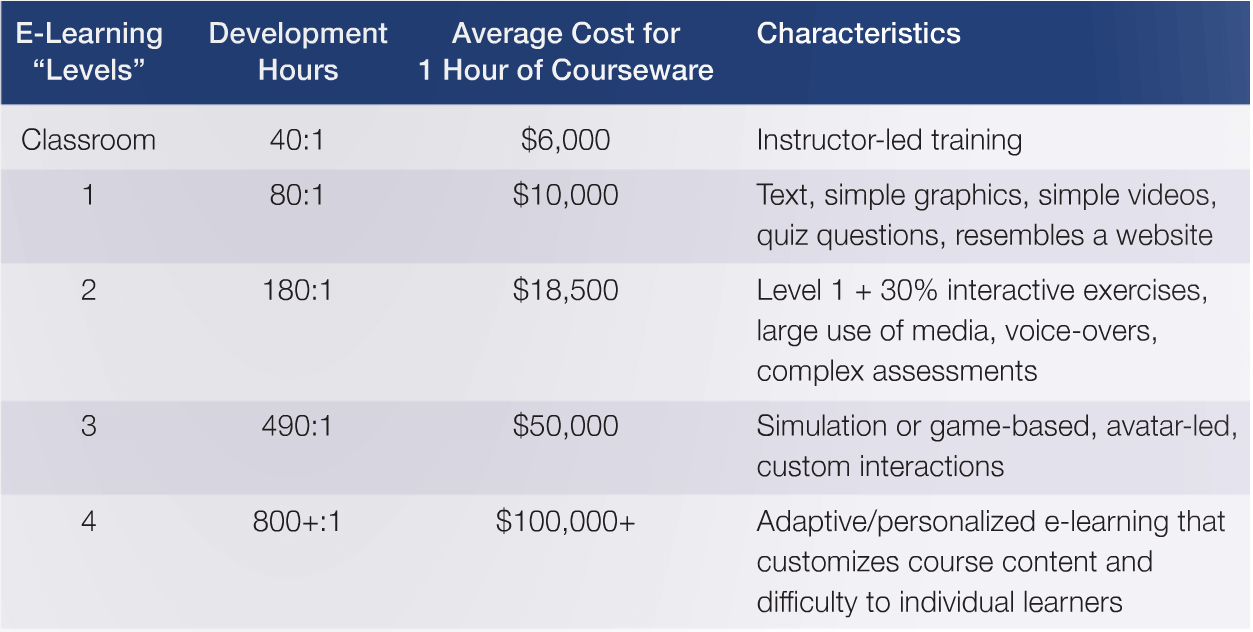The training industry often focuses on dollars per ‘seat-time’ hour of learning. In this post, we provide a more effective way to evaluate pricing.
 When it comes to cost (something that is always an important consideration), customers sometimes ask us about the development cost “per hour of run-time or seat-time” of training. We’re happy to answer that question – BUT the answer does not capture the information they seek. It can’t. It’s the wrong question.
When it comes to cost (something that is always an important consideration), customers sometimes ask us about the development cost “per hour of run-time or seat-time” of training. We’re happy to answer that question – BUT the answer does not capture the information they seek. It can’t. It’s the wrong question.
We recently shared a list of questions you should ask potential vendors when considering 3D interactive training – and the question we’ll detail here is certainly one to add to that list! But first, some background:
The Cost of Learning
Paying for services by “run-time” is not the best way to go in many instances. Consider this: If you paid according to run time, the company using shovels would get paid much more (and unfairly so) than the company using bulldozers and getting the job done more efficiently AND twice as fast.
And this scenario applies to learning as well: If an interactive training vendor can reduce the seat-time for a learning objective from one hour down to 25 minutes (and we can), doesn’t everyone win? Absolutely. The incentive should be around the goal, not the seat time or run time.
This is why learning instructors in the know, are shifting their view from seat-time to “objective mastery-time”. The question shouldn’t be how much it costs to produce one hour of seat time, rather, it should be how much it will cost to learn and master the subject.
The question, then, that is essential to understanding the true value of the training offered, is this: What is the development cost per Learning Objective?
Understanding Development Costs
Learning by seeing and hearing has a 50% retention rate, but learning by active practice and doing has a retention rate of nearly 90%!
The cost per learning objective MUST account for this ‘seeing vs. doing’ variable, so that we can keep the focus on ‘cost per subject understood’ and not on the time taken to learn.
But how does this bring us closer to determining cost? Let’s take a traditional learning module scoped out in a traditional way as a reference point – and then compare it to an interactive learning model.
For traditional learning, we would take the cost to make one hour of training time (let’s say $15k), and multiply it by the number of hours a student will need to sit to master the subject matter (we’ll call this 5 hours). So the seat-time scenario would leave us with a $75k price tag. This course would offer “next page” technology (clicking “next page” to progress to the another page of instruction).
This kind of traditional learning is not optimal, as true education has four levels, of which passive instruction only captures the first two:
1. Disbursing Information (familiarize)
2. Enforcing Knowledge (study)
3. Encouraging Interactivity (practice)
4. Mastery (true comprehension)
And this is where true interactive training comes in. Virtual Training that allows the student to actually ‘practice‘ the procedure (learning by doing, with 90% retention rate) advances the student to a master level much faster than a passive ‘next-page’ style of course.
Does this advanced training, that both saves your technician hours of training time and offers superior retention, deserve a reduced fee because it exceeds expectations in much LESS time? Certainly not.
Four levels of eLearning
As this insightful piece in CAT Magazine illustrates, not all learning is created equal, particularly when considering Level 3 and Level 4 simulation-based and customized options, which is precisely what you’ll find at Heartwood:
The problem, of course – isn’t just with the questions. Instructional designers and educators, specifically, need to lead this continuing shift from focusing on the ‘subject being taught’ to focusing on the ‘subject being learned and understood‘.
The landscape is changing and the conversation needs to change as well – and we need to be prepared for frank discussions with customers about it.
I would be interested in hearing your thoughts on this new paradigm – and if this post helps clarify this bidding disconnect!




